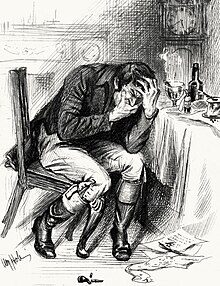Causes and Dental Conditions
- Dental conditions involving the dentin-pulp complex or periodontium
- Non-dental conditions such as maxillary sinusitis or angina pectoris
- Nociceptors (pain receptors) present in the pulp and periodontal ligament
- Poor localization of pain from the dentin-pulp complex
- Well-localized pain from the periodontal ligament
- Pulpitis, inflammation of the pulp triggered by various stimuli
- Common causes of pulpitis include tooth decay, dental trauma, and imperfect seal of a filling
- Reversible pulpitis can be treated and the pulp can return to a healthy state
- Irreversible pulpitis leads to pulp necrosis
- Dentin hypersensitivity, sharp pain triggered by cold, sweet, or spicy foods
Treatment and Prevention
- Treatment depends on the exact cause of the toothache
- Possible treatments include fillings, root canal treatment, extraction, and drainage of pus
- Proper oral hygiene helps prevent toothache by preventing dental diseases
- Dentists have a responsibility to provide relief for toothache
- Topical treatments for dentin hypersensitivity are available, but addressing the root cause is critical
Prevalence and Impact
- Toothache is the most common type of pain in the mouth or face
- It is one of the most common reasons for emergency dental appointments
- In 2013, there were 223 million cases of tooth pain due to dental caries in permanent teeth and 53 million cases in baby teeth
- Severe toothache can impact sleep, eating, and daily activities
- The demand for treatment of toothache led to the emergence of dental surgery as the first specialty of medicine
Periodontal Causes
- Chronic periodontal conditions do not cause pain, but acute inflammation does
- Apical periodontitis is inflammation around the apex of a tooth caused by an immune response to bacteria
- Apical periodontitis can occur even in teeth that are vital and may not occur in non-vital teeth
- Bacterial cytotoxins cause vasodilation, sensitization of nerves, osteolysis, and potential abscess or cyst formation
- Acute apical periodontitis is characterized by well-localized, persistent, and moderate to severe pain
Other Dental Conditions
- Food impaction occurs when food debris gets trapped between teeth during chewing
- Symptoms include localized discomfort, mild pain, and a feeling of pressure between the affected teeth
- Periodontal abscess is a collection of pus that forms in the gingival crevices
- Acute Necrotizing Ulcerative Gingivitis (ANUG) is an acute form of gingivitis/periodontitis characterized by severe periodontal pain, bleeding gums, and punched out ulceration
- Pericoronitis is inflammation of the soft tissues surrounding a partially erupted tooth, commonly the lower wisdom tooth
Merriam-Webster Online Dictionary
toothache (
noun)
pain in or about a - tooth
Toothache, also known as dental pain or tooth pain, is pain in the teeth or their supporting structures, caused by dental diseases or pain referred to the teeth by non-dental diseases. When severe it may impact sleep, eating, and other daily activities.
| Toothache |
|---|
| Other names | Odontalgia, dentalgia, odontodynia, odontogenic pain |
|---|
 |
| "Thou hell o' a' diseases" – William Hole's illustration for Robert Burns' poem "Address to the Toothache" (1897, poem c. 1786). |
| Specialty | Dentistry |
|---|
Common causes include inflammation of the pulp, (usually in response to tooth decay, dental trauma, or other factors), dentin hypersensitivity, apical periodontitis (inflammation of the periodontal ligament and alveolar bone around the root apex), dental abscesses (localized collections of pus), alveolar osteitis ("dry socket", a possible complication of tooth extraction), acute necrotizing ulcerative gingivitis (a gum infection), and temporomandibular disorder.
Pulpitis is reversible when the pain is mild to moderate and lasts for a short time after a stimulus (for instance cold); or irreversible when the pain is severe, spontaneous, and lasts a long time after a stimulus. Left untreated, pulpitis may become irreversible, then progress to pulp necrosis (death of the pulp) and apical periodontitis. Abscesses usually cause throbbing pain. The apical abscess usually occurs after pulp necrosis, the pericoronal abscess is usually associated with acute pericoronitis of a lower wisdom tooth, and periodontal abscesses usually represent a complication of chronic periodontitis (gum disease). Less commonly, non-dental conditions can cause toothache, such as maxillary sinusitis, which can cause pain in the upper back teeth, or angina pectoris, which can cause pain in the lower teeth. Correct diagnosis can sometimes be challenging.
Proper oral hygiene helps to prevent toothache by preventing dental disease. The treatment of a toothache depends upon the exact cause, and may involve a filling, root canal treatment, extraction, drainage of pus, or other remedial action. The relief of toothache is considered one of the main responsibilities of dentists. Toothache is the most common type of pain in the mouth or face. It is one of the most common reasons for emergency dental appointments. In 2013, 223 million cases of tooth pain occurred as a result of dental caries in permanent teeth and 53 million cases occurred in baby teeth. Historically, the demand for treatment of toothache is thought to have led to the emergence of dental surgery as the first specialty of medicine.
English
Etymology
From Middle English toth-ake, from Old English tōþeċe. Equivalent to tooth + ache.
Pronunciation
Noun
toothache (countable and uncountable, plural toothaches)
- (
...
Read More
